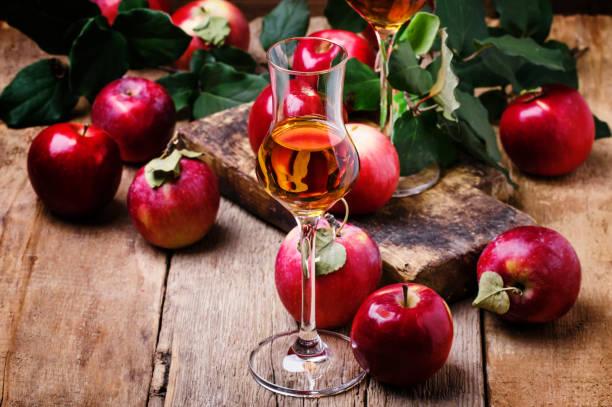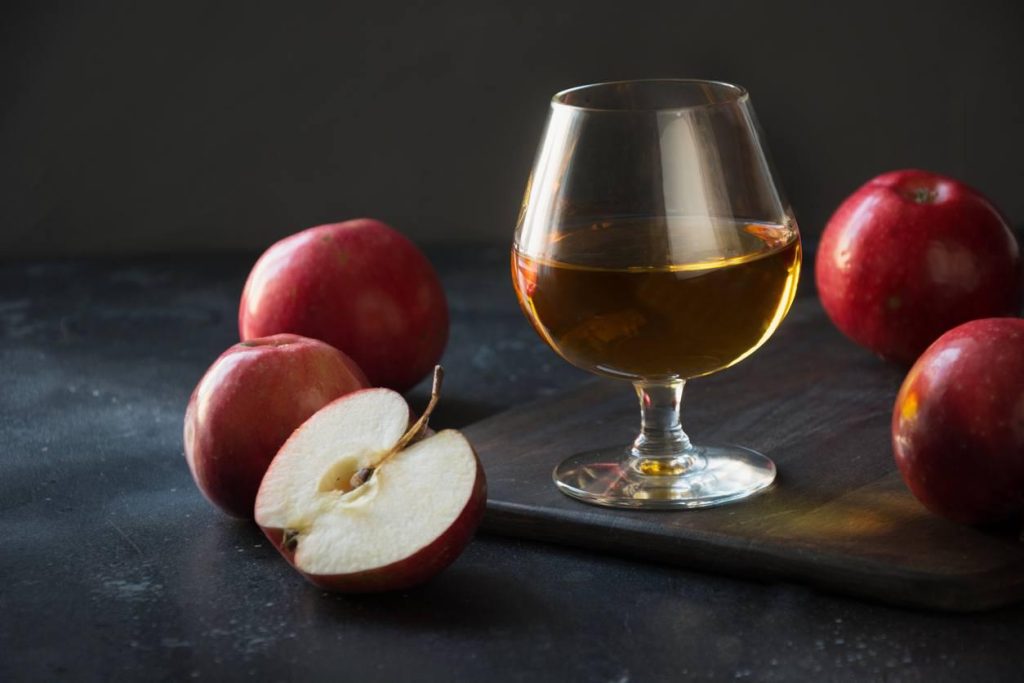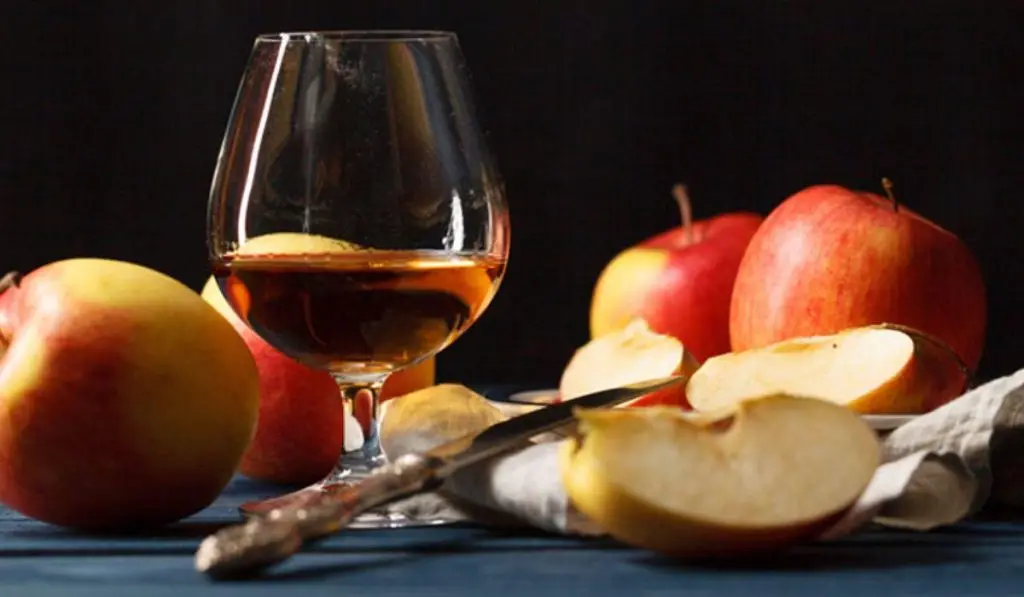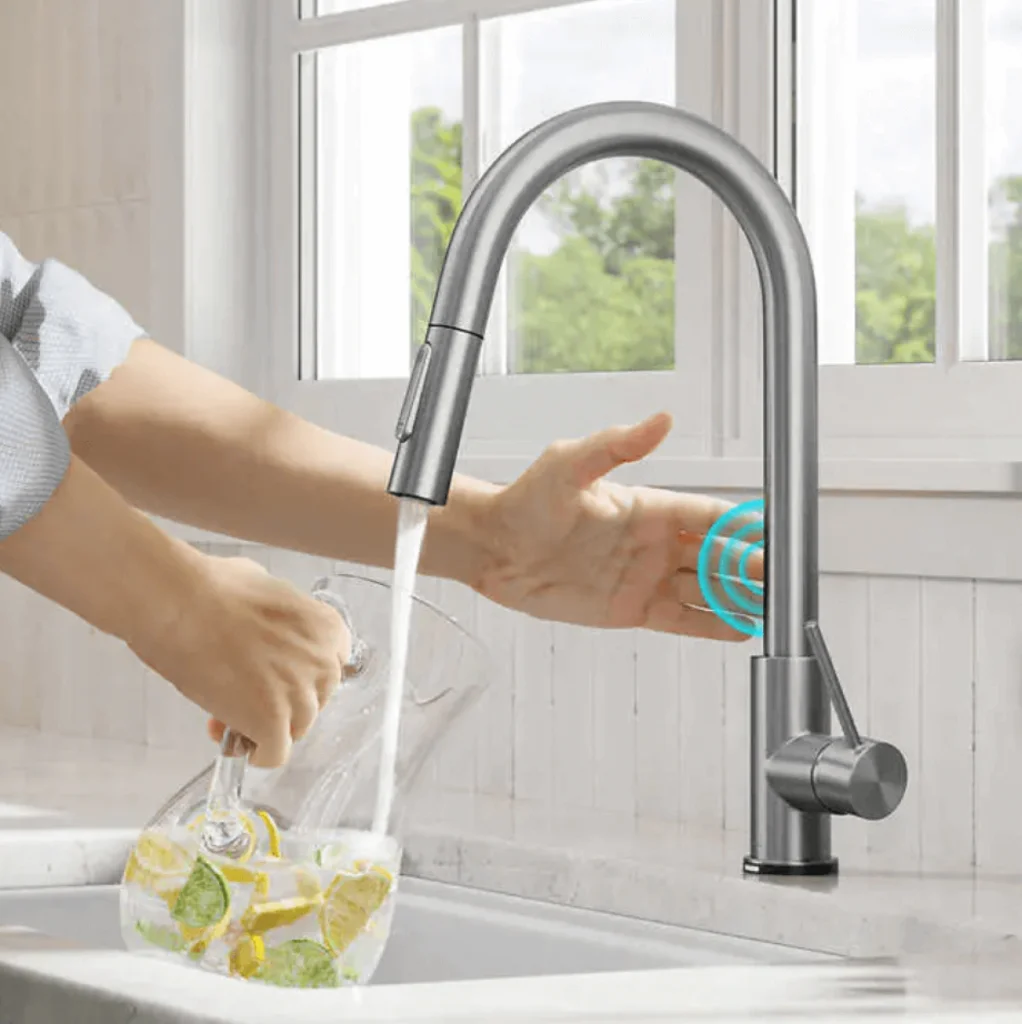| Difficulty | Cost | Duration |
| Moderate | Moderate | 3-6 months (Fermentation & aging) |
Crunchy, sweet, and bursting with tarty flavor, apples are nature’s perfect snack. Apples are found not only in orchards but also in lunchboxes and pies across the world. But do you ever wonder about fermenting your apples and making apple brandy?
Well, if the thought of homemade apple brandy keeps popping into your mind every time you eat an apple, you are in the right place.
In the comprehensive guide, we are going to talk all about making apple brandy. Besides enlisting the required tools and ingredients, we will provide a step-by-step guide on how to make apple brandy and share some insightful tips. Finally, we will address some common queries about making apple brandy.
So, let’s get fermenting!
But before we begin, let’s first explore its roots, appreciating its journey from orchard to glass.
Table of contents
The Basics of Apple Brandy
Mankind’s love affair with the humble apple is not new; the story of apple brandy dates back centuries. Tracing apple brandy’s roots, you will find yourself in the time of medieval Europe. It was the cider-making tradition of Europeans, which evolved into various distillation techniques. By the 6th century, the magical potion, apple brandy, known as “eau-de-vie” in France, had found its way to the New World.
Soon after reaching the shores of the New World, apple brandy found its way across the Americas, from Thomas Jefferson’s orchards to frontier towns. And for coming centuries, apple brandy continued to fuel raucous celebrations and warm weary souls during long journeys. It also became a symbol of resilience and even a currency in barter systems.
So, when you embark on the journey of making apple brandy at home, remember that it still carries the legacy and offers a taste of history in every sip.
Required Tools and Ingredients for Making Apple Brandy
Before you begin making apple brandy, you need to ensure that you have all the essential tools and supplies.
Essential Tools
To make apple brandy at home, you will need the following tools:
- Fermentation Bucket—Opt for a food-grade plastic bucket with an airtight lid. For the bucket size, refer to your chosen apple brandy recipe.
- Airlock—this is a one-way valve that not only allows carbon dioxide to escape during fermentation but also prevents unwanted microorganisms from entering.
- Hydrometer—it will allow you to measure the sugar content of your fermenting liquid at every step of the distillation process.
- Siphon—use it to transfer apple brew without disturbing the sediment.
- Glass Carboy—after fermentation, you will temporarily keep your mash in it.
- Still—you can build your own or invest in a small readymade still designed for home, like this VEVOR Alcohol Still 5 Gal. It is safe, durable, and highly affordable.
Key Ingredients
Now that you have checked all essential tools, it’s time to gather all the ingredients for your apple brandy recipe.
- Apples: Choose the apples that are most readily available to you. But make sure that you choose a blend of both sweet and tart varieties for a rich flavor. If you get only sweet potatoes, the brandy might have a one-dimensional flavor, but if you throw tart variety in the mix, you will get a complex and rich flavor. Make sure that there are no bad apples—remove apples with blemishes. For every gallon of finished brandy, plan on at least 5 pounds of apples.
- Yeast: It is crucial for the process of fermentation—conversion of sugars into alcohol. For maximum yield and rich flavor, consider using a yeast strain specifically made for fruit brandies.
- Sugar: If your apples are not sweet enough, you might need to add some sugar to them to get a decent yield. If you do not want the sugar to affect the flavor of the brandy, use white sugar. Otherwise, use brown sugar for a subtle caramel note.
- Water: While distilled water would be ideal, filtered tap water could also work. Remember, clean water is imperative for clean-tasting brandy.
- Bonus Goodies: To add an extra layer of complexity, you can consider adding spices such as cloves, cinnamon, or nutmeg to the fermenting mash. Similarly, you can also consider playing around with citrus peels, dried raisins, etc., for a richer flavor.

How to Make Apple Brandy?
Now that you have gathered all the necessary tools and ingredients, it’s time to begin making apple brandy.
Preparation
But before we begin, a word of caution: cleanliness is key to clean paramount. Not only get rid of blemishes and stems, but also squeaky clean all the equipment and then sanitize using a food-grade sanitizer.
Fermentation
- Juicing: Once your apples are thoroughly cleaned, chop them into fine pieces and extract their essence using a juicer. Remember, pulp can add a bitter taste to the brandy. So, consider using only the juice for the best results.
- Adding Sugar: You do not have to add sugar to your juice, but if it is below 1.065 specific gravity, you will need to add sugar to it to make sure that you get a decent yield. Use a hydrometer to measure the sugar level of your juice.
- Killing Any Wild Yeast: Before you add yeast to the juice, you will have to first kill the wild yeast. Bring the juice to a boil and let it simmer for about 10 minutes. This will not only kill any wild yeast but also take care of bacteria and keep them from spoiling your brandy.
- Adding the Yeast: Before you add yeast to the juice, consider properly aerating it according to the manufacturer’s instructions. After adding yeast to juice, give it a thorough stir to ensure that yeast is distributed evenly.
- Store Fermenting Bucket: Put a lid and an airlock on the bucket, store the bucket in a dark place, and let it ferment. Depending on the temperature and the strain of the yeast used, it may take up to 2 to 4 weeks, so it should sit tight.
- Transfer Liquid into Glass Carboy: Once the bubbling has stopped and the reading on the hydrometer stabilizes, you can go ahead and siphon off your liquid gold and transfer it into a glass Carboy, leaving some headspace.
Distillation
Now, it’s time to make apple brandy from the fermented brew by using yours still. If you do not have a still yet, check out the VEVOR Alcohol Still. Made with stainless steel, it is tough and durable and is surprisingly highly affordable.

You will simply pour the carboy’s content into the barrel of your still, put it in heat, and set up the remaining still. The heat will make alcohol vapors rise and enter into the thumper keg. For the keg, they will enter the condenser, which will condense them into a potent liquid—apple brandy.
Remember that you have got to get rid of the “heads” and “tails.” So, consider collecting the liquid at the beginning and the end separately. They may contain impurities and might be dangerous to consume. It is the middle run—in between the “head” and “tail”—that is the liquid gold that you are looking for.
Aging
When it comes to spirits, aging is the ultimate alchemist. So, pour your homemade apple brandy into an oak barrel and put it away for aging. The more time, the better. However, you will need to give it at least six months to give you a smooth yet complex flavor.
Additional Tips on Making Apple Brandy
Here are some insightful tips from experts that will help you take your homemade apple brandy to the next level.
- Choose your apple carefully: Experiment with different varieties of apples until you find the one that gives your apple brandy a unique and rich taste. When choosing apples, you have to tread a fine line between sweet and tart varieties. Sometimes, choosing a mix of both sweet and tart apples produces the best results.
- Spiced things up: For extra layers of flavors, consider infusing your fermenting mash with spices like cinnamon, nutmeg, cloves, etc. You can also consider experimenting with citrus peels, dried raisins, etc. Experimenting is good, but remember not to overdo it.
- Cleanliness is paramount: One just cannot stress the importance of cleanliness enough when it comes to making apple brandy. So, make sure that all the tools and equipment are sanitized properly before proceeding with a batch.
- Temperature control: Temperature during the fermentation process is key. It affects not only the fermentation time but also the flavor and yield. Ideally, the temperature should range between 60°F and 70°F.
- Stuck Fermentation: If your brew stops bubbling after a few days, check the temperature (it might be too cold). Check if you need to add more yeast to it and if the airlock is working okay.

FAQs about Making Apple Brandy
How long does apple brandy take to ferment?
It will take around 2 to 4 weeks to ferment properly. It depends on various factors such as the strain of the yeast, temperature, sugar content, etc.
How long does homemade brandy last?
Like other spirits, apple brandy tends to last indefinitely if left unopened.
What are the best apples for brandy?
McIntosh and Red Delicious are the best and most commonly used apples for making apple brandy. However, other popular apple varieties such as Braeburn and Fuji also produce fine brandy. So, do not be afraid to experiment.
Conclusion
So, there you have it. Using the knowledge gained from this article, you can go ahead and transform your apples into homemade apple brandy. Just remember that cleanliness is the king (and queen), and be mindful of the local legalities of making apple brandy—you do not want to get in trouble for making apple brandy.





